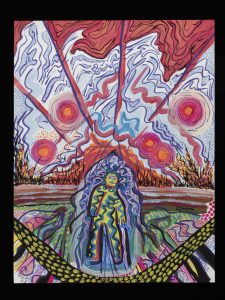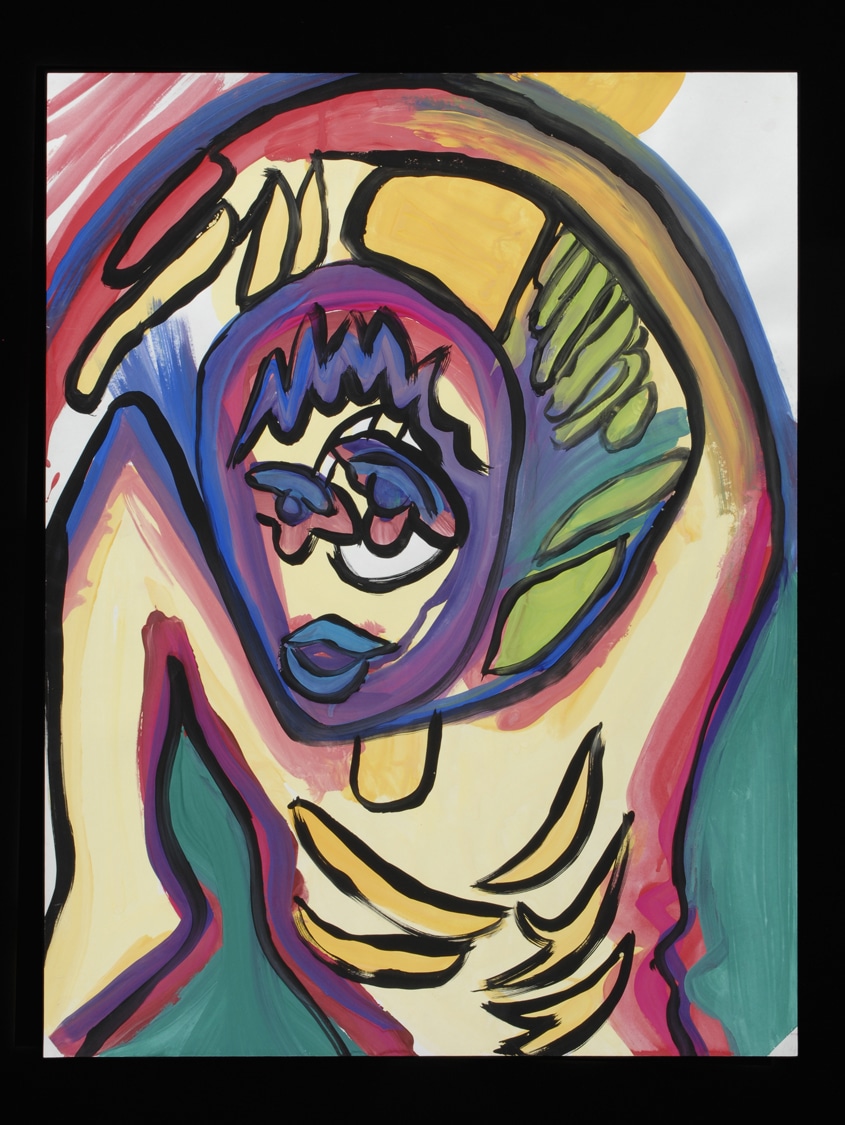Have you ever felt stuck in life or in therapy? If you are an artist, do you ever feel bored by your own work, as though the creative well had dried up? It seems to me there are many things that are unknown or maybe unknowable about the creative process. We tap into the creative process when we try to solve thorny problems or change old ways of being. As a psychotherapist and painter, I have often thought about how creativity can be used inside as well as outside of therapy.
About twelve years ago. I discovered experiential painting. I think of it as a meditation on the arising creative impulse. I had been given a copy of Michelle Cassou’s book, Life, Paint & Passion,[1] which sat for a year or more unopened in my room. When I finally started reading it, I was struck by one thought: “I should be painting every day.” The first painting I created using this approach left me ecstatic. I had trouble sleeping that night and just wanted to stay home the next day and paint! I can still feel the sense of expansion and exhilaration I experienced that day. I did not know what was so amazing about the experience I was having at the time, but I have some thoughts about it now.
Around the same time, I started learning about Process Work (also known as Process-oriented Psychology). Process Work is the name given to a body of psychological theory and methodology based on Arnold Mindell’s observation, in the early 1970s, that somatic experiences, such as physical sensations, body symptoms, and illness, mirrored nighttime dreams.[2] Mindell found that by noticing and attending to mysterious or secondary signals (signals that are ordinarily ignored or marginalized in favor of objective reality), he could help people to amplify commonly dismissed or overlooked impulses and unfold them to reveal a deeper meaningful process.
As I experimented with and started learning about Process Work, I remember not quite understanding the sequence of steps that guided me but nonetheless feeling that I had discovered something surprising, something that originated from a place other than my verbally mediated mind. I began to see some basic connections between experiential painting and Process Work: they both value non-consensual experience, and they both use momentary awareness to unfold experience and tap into deep background currents behind our everyday lives. As my exposure to Process Work grew, I began to understand that “primary” (our everyday way of seeing and experiencing ourselves) and “secondary” processes (those less known and often disturbing) are separated by an “edge.” Edges represent the limit of our known identities as well as our point of contact with unknown experiences (Julie Diamond).[3]
One day early in my painting experience, I came to a place where I was hesitant to paint the next impulse. I had reached the limit of my known identity and it stopped me from proceeding. I paused and asked myself, “What would I paint if I didn’t have to like my painting?” As I stood there and made inner preparations to try to paint what I could not or would not a moment before, I saw myself stepping across a threshold and into a vast, dark, unknown space. (According to Cassou, “in creative painting the defining moment is when you face the fertile white void. Your openness and your courage to step into that void with the spirit of exploration are all that matter.”[4]) As I saw myself stepping into the void, I realized I was at a momentary edge in my painting, and that I was doing a kind of inner work to help me get over that edge.
As I reflected on this inner process, I came to see the experience of venturing into the unknown in my paintings as parallel to the process of crossing the known limits of my everyday identity and connecting with and exploring less known parts of myself – mysterious, not-me parts that disturbed and delighted me but also helped my sense of self expand and include more. As time went on, I began to use this inner work more and more whenever I reached an edge while painting.
For me, painting is so like working on personal issues — full of tiny and larger edges that require awareness and, at times, courage or support to cross in to unknown territory where you can discover new ways of being, new identities and new ways of understanding oneself and others. The right dose of creativity in dealing with inner or outer conflict can sometimes help set the pain and angst of our problems aside. Even if for a moment, it may be enough. With a bit of experimental spirit, we can cross small edges, try on new points of view and stand in other shoes. Sometimes, it is even exhilarating!
 How can you use the creative edge as a metaphor to get across personal edges in relationship, in work or within yourself? What question would free you to step into the unknown places in yourself in order to find new perspectives? I would love to hear what has worked for you.
How can you use the creative edge as a metaphor to get across personal edges in relationship, in work or within yourself? What question would free you to step into the unknown places in yourself in order to find new perspectives? I would love to hear what has worked for you.
[2] A. Mindell, Dreambody: The Body’s Role In Revealing The Self (New York: Penguin Arkana, 1982).
[3] J. Diamond & L.S. Jones, A Path Made By Walking: Process Work In Practice (Portland, OR: Lao Tse Press, 2004) 20.
[4] M. Cassou, Point Zero: Creativity Without Limits (New York: Tarcher/Putman, 2001) xvii.
